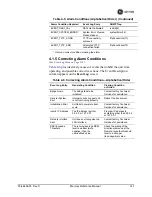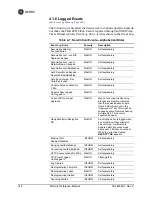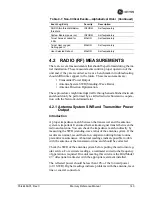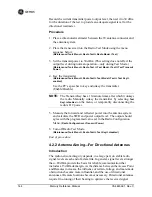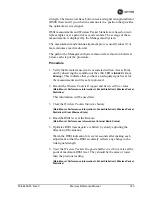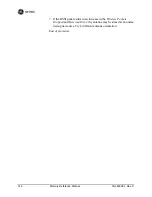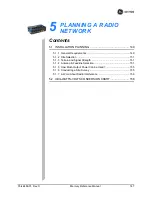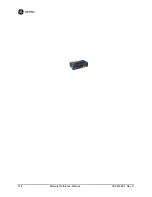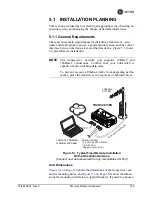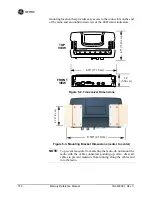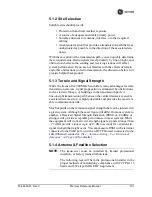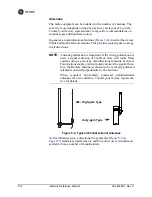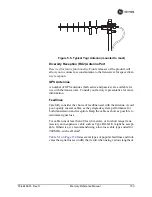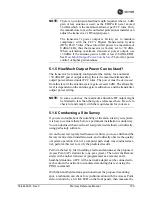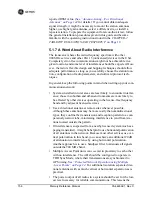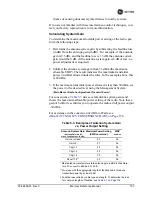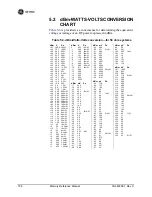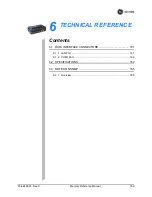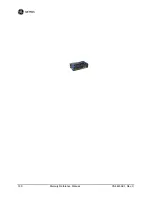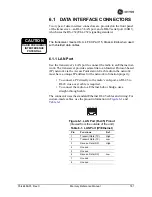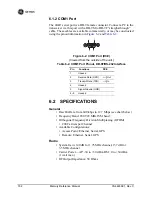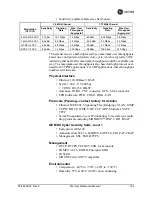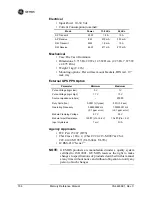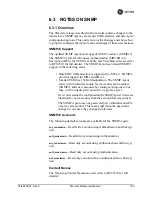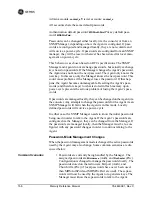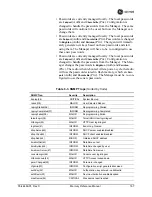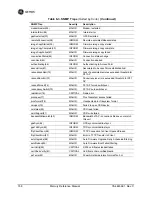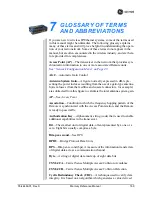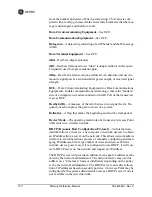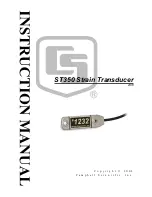
05-4446A01, Rev. C
Mercury Reference Manual
155
NOTE:
There is no minimum feedline length required when a 6 dBi
gain or less antenna is used, as the EIRP will never exceed
36 dBm which is the maximum allowed, per FCC rules. Only
the manufacturer or a sub-contracted professional installer can
adjust the transceiver’s RF output power.
The transceiver’s power output is factory set to maintain
compliance with the FCC’s Digital Transmission System
(DTS) Part 15 rules. These rules limit power to a maximum of
8 dBm/3 kHz, thus the transceiver is factory set to +30 dBm.
When calculating maximum transceiver power output, use
+30 dBm if the antenna gain is 6 dBi or less (36 dBm ERP).
See
How Much Output Power Can be Used?
below for power
control of higher gain antennas.
5.1.5 How Much Output Power Can be Used?
The transceiver is normally configured at the factory for a nominal
+30 dBm RF power output setting; this is the maximum transmitter
output power allowed under FCC rules. The power must be
decreased
from this level if the antenna system gain exceeds 6 dBi. The allowable
level is dependent on the antenna gain, feedline loss, and the transmitter
output power setting.
NOTE:
In some countries, the maximum allowable RF output might
be limited to less than the figures referenced here. Be sure to
check for and comply with the requirements for your area.
5.1.6 Conducting a Site Survey
If you are in doubt about the suitability of the radio sites in your system,
it is best to evaluate them before a permanent installation is underway.
You can do this with an on-the-air test (preferred method), or indirectly,
using path-study software.
An on-the-air test is preferred because it allows you to see firsthand the
factors involved at an installation site, and to directly observe the quality
of system operation. Even if a computer path study was conducted ear-
lier, perform this test to verify the predicted results.
Perform the test by first installing a radio and antenna at the proposed
Access Point (AP) station site (one-per-system). Then visit the Remote
site(s) with another transceiver (programmed as a remote) and a
hand-held antenna. (A PC with a network adapter can be connected to
each radio in the network to simulate data during this test, using the
PING command.)
With the hand-held antenna positioned near the proposed mounting
spot, a technician can check for synchronization with the Access Point
station (shown by a lit
LINK
LED on the front panel), then measure the
Содержание MDS Mercury Series
Страница 2: ......
Страница 10: ...2 Mercury Reference Manual 05 4446A01 Rev C ...
Страница 28: ...20 Mercury Reference Manual 05 4446A01 Rev C ...
Страница 36: ...28 Mercury Reference Manual 05 4446A01 Rev C ...
Страница 140: ...132 Mercury Reference Manual 05 4446A01 Rev C ...
Страница 142: ...134 Mercury Reference Manual 05 4446A01 Rev C ...
Страница 156: ...148 Mercury Reference Manual 05 4446A01 Rev C ...
Страница 168: ...160 Mercury Reference Manual 05 4446A01 Rev C ...
Страница 184: ...176 Mercury Reference Manual 05 4446A01 Rev C ...
Страница 194: ...I 10 Mercury Reference Manual 05 4446A01 Rev C ...
Страница 196: ...GE MDS LLC Rochester NY 14620 General Business 1 585 242 9600 FAX 1 585 242 9620 Web www GEmds com 175 Science Parkway ...

